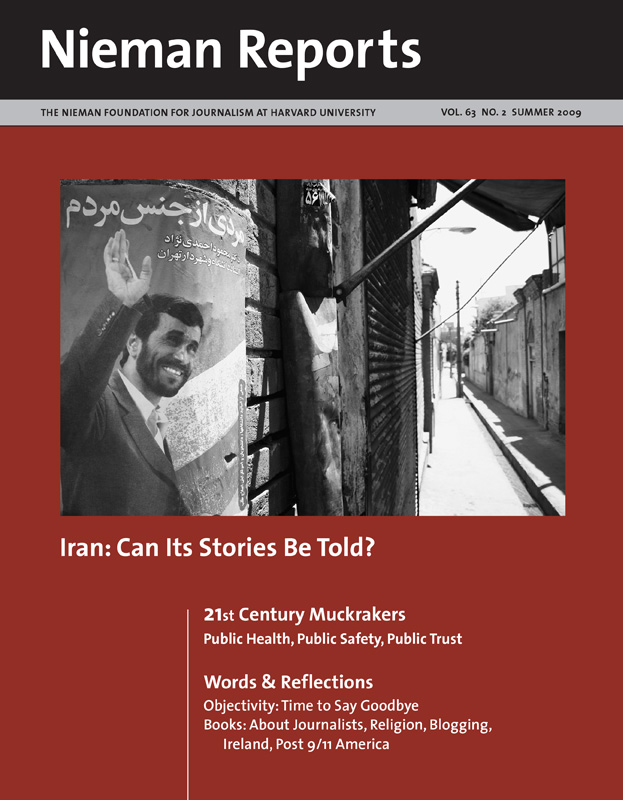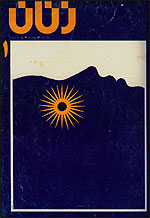I was 10 years old and every week my mother would buy Zan-e Rooz (Today’s Woman), Iran’s highest circulation women-oriented publication, from the neighborhood newsstand. She always said that when I read a magazine I can speak better. My sisters and I would wait for the magazine every Saturday, and I particularly enjoyed reading its illustrated stories.
In those childhood days I never imagined that I would one day become the chief editor of that magazine. For me, that job seemed like a succulent fruit on an out-of-reach branch, one that a small girl like me could not possibly reach. So when at 21 my sister called to ask if I wanted to be a journalist, I suddenly felt that the missing piece to the puzzle of my being had been discovered. Without hesitation I began to make my quiet and snail-paced move into the world of women’s press.
For a decade I slowly and incessantly traveled this road, and with each issue of Zan-e Rooz published—despite our many limitations—we paved a rocky road smooth, so that the women’s movement in Iran could progress along it. When accused of “promoting modernist, Westernized and feminist tendencies,” I was fired from the semipublic organization that published Zan-e Rooz.
However, I did not step aside from women-related journalism. Without hesitating, I set out to publish Zanan (Women) magazine for which I became the license holder. With greater control and speed, I was moving forward. Now I was in the arena of maximum expression of views and desires of women no matter their ideology, perspective, taste and approach. And our magazine welcomed them, not just a minority of women who had official legitimacy and whose thoughts and needs coincided with commonly prescribed standards.
Along this road, new pathways opened one by one. Women, as well as concerned and well-skilled men, warmly greeted my attempt to publish a magazine that searched for solutions to the problems women confronted in intellectual, social, legal, political, educational and other arenas. At Zanan, we practiced collective work, democracy and tolerance for opposing views. Our governing principle was the elimination of sexism and the gaining of understanding of the problems facing women working in double shifts in public and private spheres. Zanan did not discourage anyone whose goal was to flourish; everyone could grow in accordance with her talents and capabilities. There was no place for hopelessness. Our answer to self-doubt in the fulfillment of objectives was “nothing is impossible.”
This intimate, unified and collaborative family worked—or, better put, lived—together for 16 years. Through joys and pains, opportunities and threats, poverty and prosperity, and highs and lows, the magazine’s resolve did not break, and its efforts did not diminish. It was with this blossoming synchrony between stories we published and the goals of Iran’s women’s movement that had just taken a new breath for which Zanan served as its platform. Anyone who did research on women’s issues benefitted from hundreds of articles, stories and interviews that were featured in Zanan. And the magazine served, too, as an indicator of the progress made by Iranian women, which was something authorities in Iran could also take advantage of in the international arena.
Unfortunately, in a society that has yet to reach political maturity and where democracy has not become institutionalized, political leaders see the survival of their system in the envelopment of a protective cover against criticism. They seem unaware that tossing ash on fire only hides its glow, and it resurfaces and burns when least expected. This outlook that exists in certain sectors of Iran’s governing structure led them to shut Zanan after accusing the magazine of portraying the situation of women in a “dark light.” What our journalists did to echo the needs and problems of women (with the intent of building awareness among Iranians and public officials so solutions could be found) was interpreted as being a darkened portrayal. To prevent our revelations about women and their issues from disturbing the public’s consciousness, Zanan was closed.
It has been two years since they have taken from our family our 16-year-old daughter, Zanan. I have walked up and down many stairs and corridors to find my lost one but have not had any success. Supporters and sympathizers have gone in one or another direction and crawled into a corner. Women professionals, artists, writers and critics have lost their tribune. Most of the individuals, whose work only Zanan had the courage to publish, no longer have an arena for the free expression of their thoughts and ideas.
After one year of unemployment, and for economic reasons, I accepted a management position in an arts and cultural institute; but my heart is somewhere else. Every day I arrive at work, but a piece of the puzzle of my being has been lost.
Shahla Sherkat, founder and editor in chief of Zanan magazine, received the Louis M. Lyons Award for Conscience and Integrity in Journalism from the 2005 class of Nieman Fellows and the Courage in Journalism Award by the International Women’s Media Foundation (IWMF). In 2007, the Association of Iranian Journalists named her as one of the five prominent journalists of the year.



